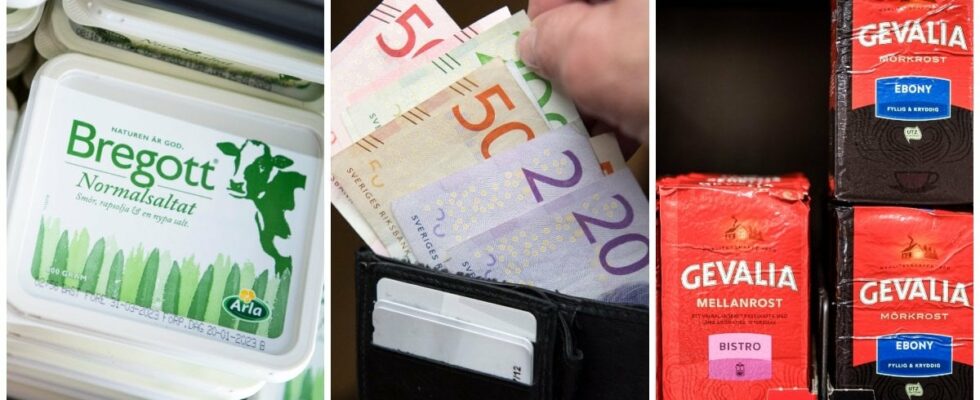In recent years, many Swedish households have had to turn around the slants to get the economy together, not least since the prices of food have been off.
When it became more expensive in the grocery stores, it was also being written more and more about “shrink -fluctuated” – the phenomenon when a package becomes smaller, while the price exists.
– You avoid raising the price of the price tag and instead reduce the content of the product without communicating it clearly, in the hope that we consumers should not notice that it became more expensive for us, says Johanna HållénSecretary General of Sweden’s Consumers, to DN.
Don’t miss: ICA’s alarm: then prices will rise
Johanna Hållén. Photo: Tomas Oneborg/SvD/TT
Read more: Here the Coop customers are allowed to divide 1.41 billion
Several goods have shrunk over the years
According to the newspaper, shrinkfly has previously struck goods such as ice cream, tomatoes, juice and coffee and News24 Have previously reported on how, for example, Gevalia and Triumf made their packaging less.
Findus and Lithells have, according to DN, been accused of shrinks in terms of products such as wok vegetables and sausages and lately it has also been reported on how Libero’s new diaper packs contain significantly fewer diapers, without the price following the same development. Owner Essity explained it all to Aftonbladet with the fact that it is a product improvement and that the packaging has become less for environmental reasons.
Read more: Gevalia’s coffee pack has shrunk 75 grams – but not the price
Photo: Caisa Rasmussen/Ttfoto: Pontus Lundahl/TT
Don’t miss: Classic ice cream has become 2.5 deciliters less – sold at the same price
ARLA has been accused of shrinks several times
Another company that has been accused of shrinks is Arla. In 2024, according to DN, they reduced their classic Bregott packages by 50 grams, while a larger package took place in the range.
The explanation? Changed household needs and ever higher food prices.
– Food prices rushed and household purchasing power deteriorated. Although the kilo price was approximately the same, the cash output itself became considerably less on the two smaller Bregott packages, says Max WallenbergPress Manager at Arla, to DN.
Four years earlier, Arla Keso changed snacks by reducing the amount of five grams topping, while the price was left unchanged.
– For people to afford, we had two options. Either we had to raise the price or reduce the content. We chose it later, so that people could afford to buy the product, Wallenberg tells the newspaper.
Read more: News Today – Current news from Sweden and the world
Don’t miss: Latest news – take part in what is happening right now
